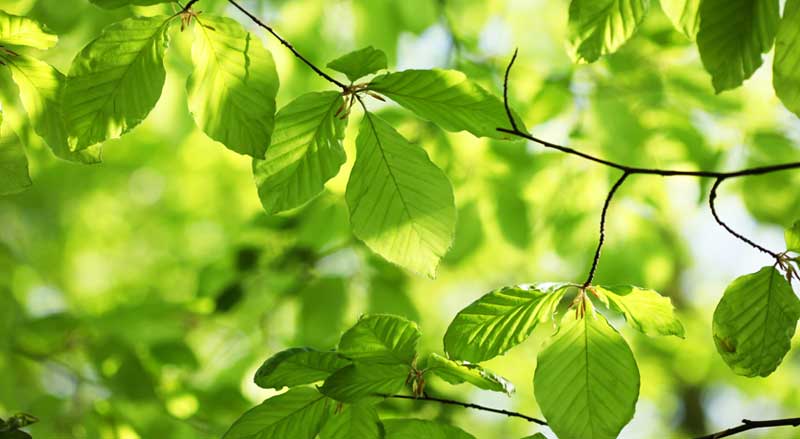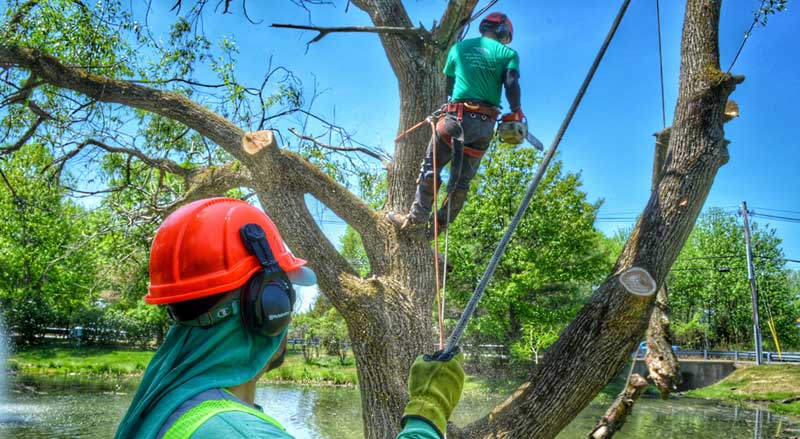Evergreen trees add year-round color while solving landscaping issues. Knowing the characteristics and benefits of some evergreens will give insight into the best evergreen trees to plant in New Jersey, and how they can improve your landscape.
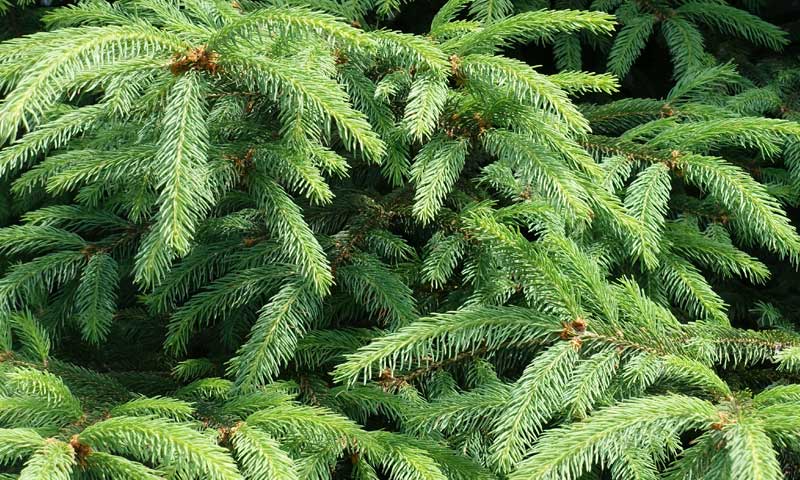
The Norway Spruce (Picea abies)
The Norway spruce evergreen is a very popular New Jersey landscape tree and Christmas tree. This ornamental fast-growing tree easily tolerates New Jersey’s harsh winters.
Its shiny, bold, dark green needles can grow to one inch. What’s most striking are the tree’s cones that mature at 4-6 inches long.
The adult tree can be 60 feet tall or more. If you’re moving into new construction or adding to your landscape, you will only need to wait a few years before you enjoy the privacy this tree offers. Its dense structure can also protect other landscaping from disruptive winds.
This spruce tree is extremely resistant to disease and insect problems. Deer will not want to munch on your tree; its needles are sharp, and the tree has little food value.
This tree requires at least six hours of sun daily, but it can tolerate partial shade. It has some drought tolerance.
It thrives in USDA plant hardiness zones 3 through 7.
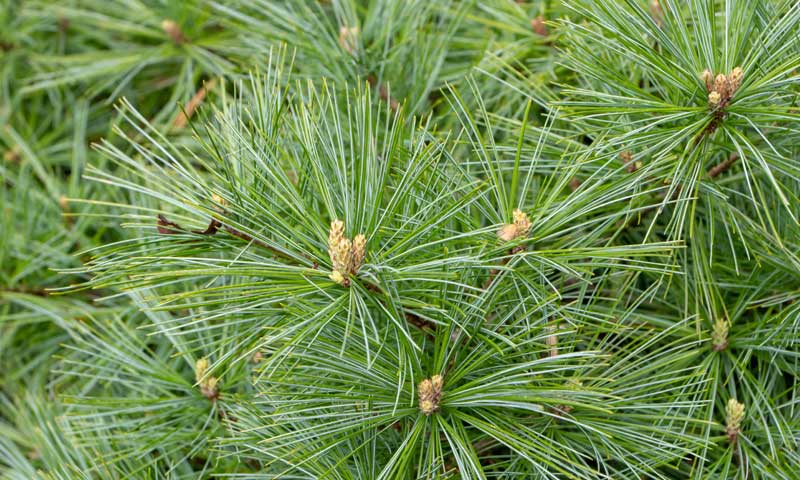
The Eastern White Pine Evergreen Tree (Pinus Strobus)
The blue-green eastern white pine is also a popular fast-growing evergreen. These trees provide shelter from winds, as well. Its height at maturity can reach between 50 and 80 feet.
But in contrast to the Norway spruce’s shorter and deeper-colored pine needles, its needles are blue green, long, and velvety. They appear graceful as they wave in the breeze. The needles can reach 5 inches in length and grow in groups of 5. The tree also has brown cones, which can grow from 3 to 8 inches!
Older needle clusters are deciduous—they shed in the fall but not every year. Usually, the white pine keeps needles for 2-3 years. In the autumn, older needles change color and fall. However, the current season’s growth remains on the tree for year-round beauty.
Unfortunately, the eastern white pine is prone to disease and pest problems. It’s recommended that if you want to use this tree in your landscape, check that blister rot, a sometimes deadly tree disease, isn’t prevalent in your area.
This tree enjoys full sun and needs a minimum of four hours direct sun every day. It doesn’t do well in continually wet or drought-prone soils.
The Eastern white pine does best in USDA plant hardiness zones 3-8.
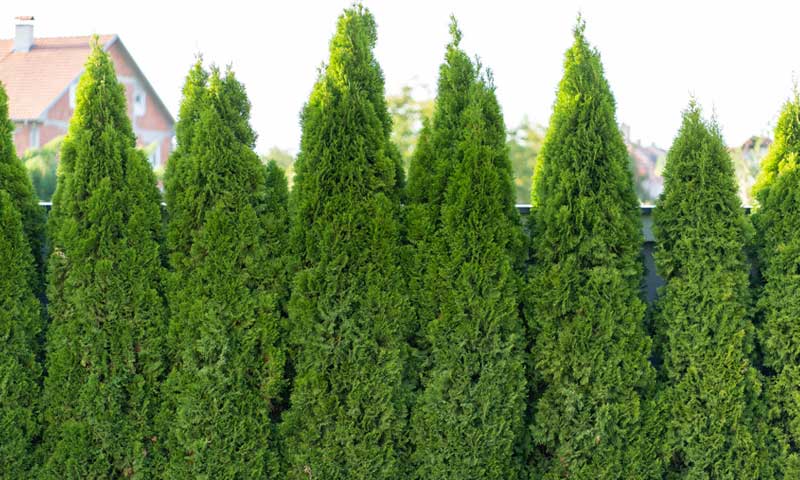
The ‘Green Giant’ Arborvitae (Thuja standishii x plicata)
This fast-growing evergreen tree has rich green foliage. It naturally takes on a narrow conical shape.
The leaves are packed tightly together to form flattened sprays. Leaves sometimes darken or slightly bronze in winter.
Hedges of arborvitae provide ample privacy. But this arborvitae also holds its own as a single specimen tree.
This tree is one of the fastest-growing conifers, growing 3 to 5 feet a year. It can reach a height of 50 feet in as little as ten years!
Once established, this tree will easily survive snowy winters. Here’s more on how to help prevent and fix winter tree damage.
It enjoys well-drained soil and does best in the sun to partial shade.
Deer are not particular fans of this tree, but if there’s a food shortage, they may munch on it.
The Eastern white pin does well in plant hardiness zones 5-8.
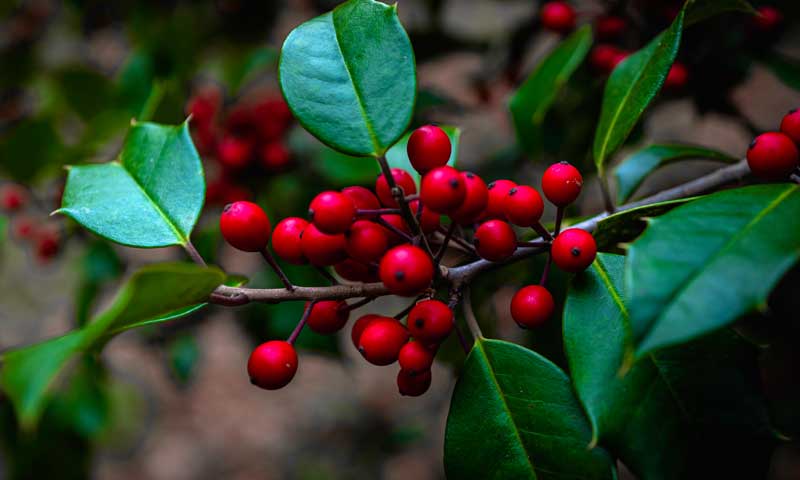
The American Holly Evergreen Tree (Ilex opaca)
The popular American holly evergreen tree has stiff branches and glossy green leaves. The female tree displays greenish-white blooms in the spring and vivid red berries in the fall.
This tree is an ornamental tree; it’s prized for its aesthetic value.
The American holly will lose some older leaves each spring as new leaves grow in.
At maturity, the American holly can reach between 15 and 30 feet. But the species is slow growing, so it’s not a good choice if you’re trying to create privacy quickly.
This tree grows best in well-drained soil but can tolerate moist soil. It likes full sunlight or some shade.
If you plant this tree in your yard, be sure your child or dog doesn’t eat the berries or leaves. However, these berries are a safe tasty treat for birds.
The American holly’s hardiness zones are 5-9.
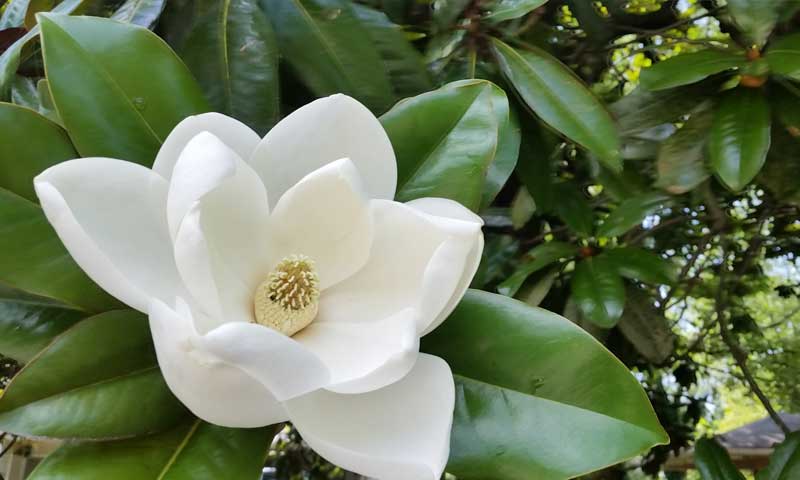
Southern Magnolia Tree (Magnolia grandiflora)
The southern magnolia tree is a broad-leafed evergreen tree with shiny large leaves. And this ornamental tree’s not shy—it will enjoy being the centerpiece of your landscape.
Its richly perfumed showy blooms arrive in late spring and can grow up to 12 inches in diameter. Family and friends will want to experience the creamy-white fragrant flowers up close.
Older brown and yellowing leaves drop in the spring after new green leaves have already come out—often just before flowering.
The southern magnolia tree can grow to a height of 60-80 feet and does well in full sun or partial shade. It thrives in moist, rich soil.
The USDA plant hardiness zone spans 6a–10a.
Read more about ornamental trees and how to get them ready for spring. We also have tips on protecting ornamental trees in winter.
At Trees Unlimited we offer complete tree services. If you need help caring for your trees, contact us or request an estimate today.


